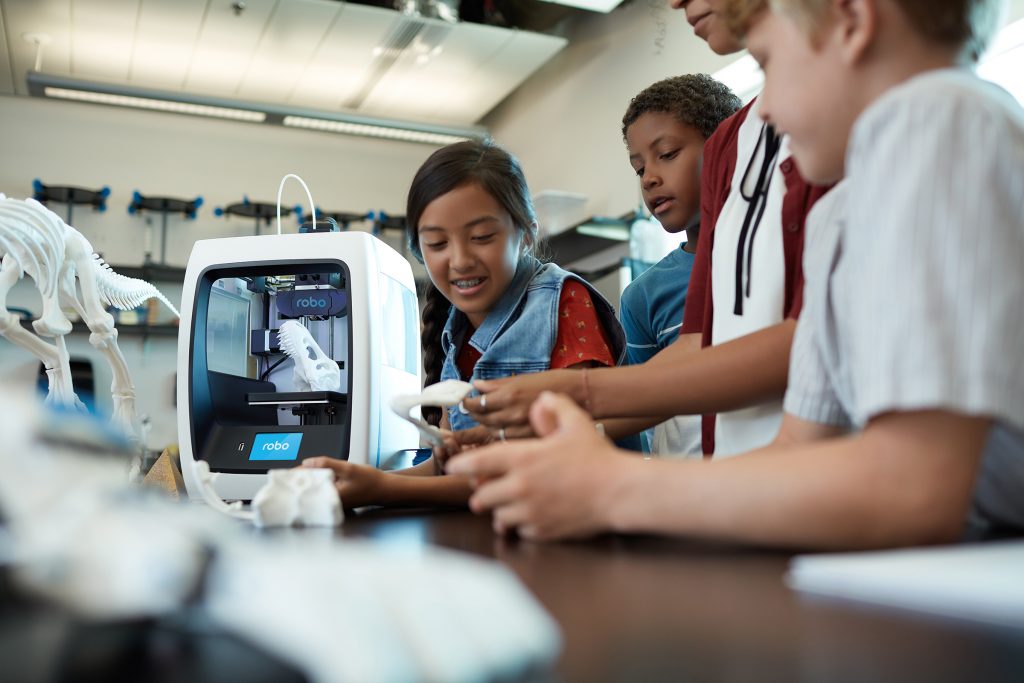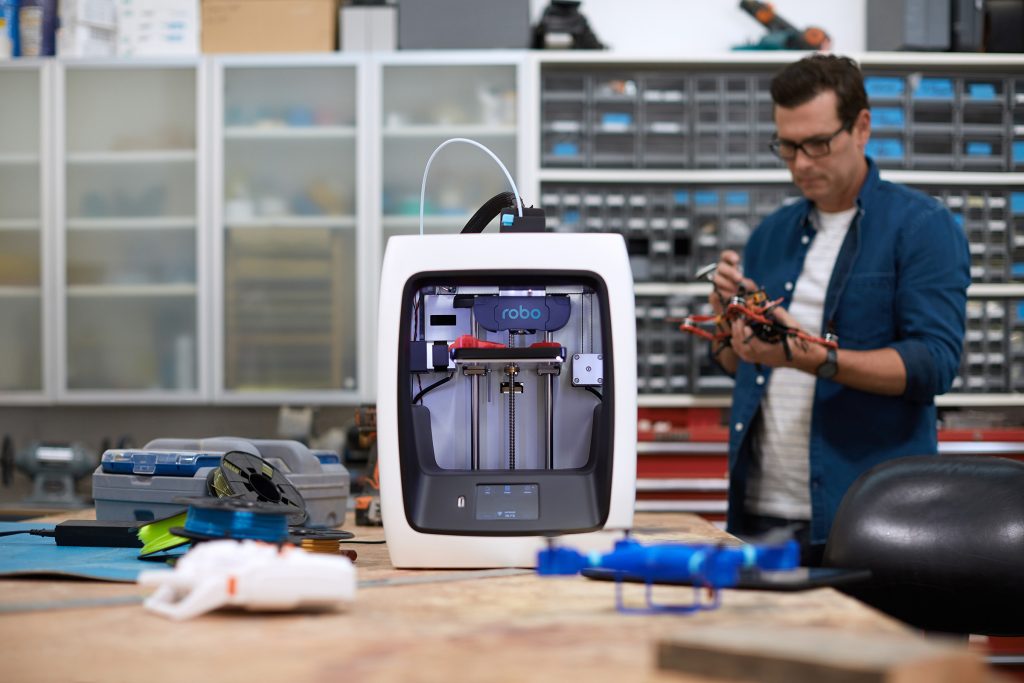This is a thought leadership article in our series looking at the future of 3D printing.
As the co-founder of Robo, a desktop 3D printer company in San Diego, CA, I have been on a mission to bring 3D printing to the world since I fell in love with the technology back in 2012. Through this short amount of time, I have already witnessed a steady growth in the use of 3D printing in both professional and personal cases.
We are starting to see that 3D printing is becoming more accessible to everyday consumers and students, in addition to those using it in a professional capacity. Companies like Robo hope to make people’s lives easier — not only for entrepreneurs that already use 3D printing to accelerate their time-to-market, but also anyone with an entrepreneurial mindset who wishes to build something with their own hands that they never thought was possible.
As it becomes more widely accepted by mainstream audiences, I believe 3D printing will become an essential part of everyday life, and we are here to help people to learn how to use 3D printing for a variety of personal and professional applications. We are already seeing 3D printer users shaping the future and solving problems in the world, and advancements in the industry will only increase these opportunities.

Over the next five years print speeds will increase and higher quality content will become more available to consumers — content that is useful, functional and optimized for printing in 3D. In the public domain such use cases are not widespread; however in design organizations and with certain subsets of people 3D printing is an incredibly useful tool. We know one southern California-based firefighter who has designed and made more than 20 3D printed items to make his fire station and their tools more effective and efficient. The advancement in specialty materials like metal, ceramic and glass will open up doors to greater possibilities and turn more people into makers, no longer limiting creation to plastic wares. These newfound makers will drive the new world of opportunities.
Right now, the state of 3D printing requires users to go and find content online then sift through unusable files and low quality models to find models to print. Mass consumers don’t want to “figure it out.” It’s our job to know what users want to print and deliver it to them in the most convenient and simplistic way. Users in the future who get into 3D printing won’t need to think about what to do or how to do it. If they will need something, for example, an attachment for their hose, they will be able to quickly find it, and print it. Users will be able to easily access relevant 3D models they can make and seamlessly integrate into their lives. Within our app and on our devices, we intend to use data from our users to push new, high-quality RELEVENT content to that specific user to allow them the ability to continue to excel and make new and exciting prints.

Additionally, manufacturers don’t really know how successful people are with what they’re printing, or how closely the end product resembles the designer’s intent. Owners of IP will become more confident to release their content as 3D models as the quality of ‘self-manufacturing’ increases, and 3D files will be digitally protected, providing large corporations with the confidence to manage digital inventories of parts that can be 3D printed.
If you could print a replacement part with the click of a button and fix it yourself, would you? I think most people would. As speed of printing increases, large corporations that have huge inventories of replacement parts should look to digital file inventories as an alternative to helping people repair their own items quickly and easily. For example, if Whirlpool gave us access to any and all parts for their equipment, then I think users could find additional value in home repair with 3D printing.
I am excited for the developments of materials and technologies, which will enable a greater range of things that can be made. With advancement in material types, quality of prints and print speeds, things will be made in minutes that will replace common purchases. The ability to make objects exactly to your needs, size, fit, finish and color will provide so much more utility than buying generic items from a hardware store.

As I touched on earlier, Robo — as with other like-minded companies in the space — is on a mission to balance the needs between professional users and new users. In a general sense, new users are thinking, “I’m not sure what I might make or how,” while professional users are looking for features that make their jobs easier and their outputs better.
While we are making printers that are more accessible to general consumers, this in turn, is making professional users more successful and productive as well. We’re aiming to break down the stigma, and the barriers that prevent users from diving into 3D printing, while simultaneously improving the experience for professional use.
Over the next five years, we will continue to see an emergence of easier-to-operate printers. Consumer use will increase as the number of steps and interaction for users will decrease. Elimination of specialized slicing software will allow users to have a file, customize and personalize the file to their needs, and just press print. Robo is already integrating on-board slicing to remove a step from the user’s path to print, however users are still able to customize the files as desired. Standalone slicing software will become redundant and optimized print setting will be within the file to ensure consistent end results for all users.
Education
Over the course of five years, 3D printing will be further integrated into the education system. We are already seeing the educational system changing, with high-tech hives putting more of an emphasis on design thinking pedagogy, including team based ideation processes in classrooms. Project based learning is where education is already heading and 3D printing provides a foundation to solve problems in the world with design and development. Incorporating this technology with STEM and STEAM 3D kits, students will learn 3D design skills and have access to 3D printers that give them the capabilities to think outside the box, focus on creating opportunities for themselves and challenge the way the world works. No longer will all the problems of this world be solved by highly educated engineers and professionals, but rather students at younger ages who will have been exposed to a world where their ideas can be explored further using 3D design and 3D printing.
The 3D printing industry has developed a reputation of being useful only to those in the tech and design markets. More recently, 3D printing has been associated with big-name brands that leverage the innovative technology for product creation and company growth. However, there is a huge opportunity for the industry to expand and make an impact on the consumer space – 3D printers have the ability to create almost anything, we just need the proper tools and personal motivation to bring this to life.
I am excited to be in this industry, especially as Robo continues to grow and is heavily involved in revolutionizing the way our culture brings ideas to life through easier entry level design tools, more focused teaching and advancements in materials.
You can find out more here about Robo.
If you want to give us your perspective on the future of 3D printing then email us now.
For more 3D printing insights and analysis, subscribe to our free newsletter and follow our active social media accounts.
Read more about the future of 3D printing in the 3D Printing Industry thought leadership series.



